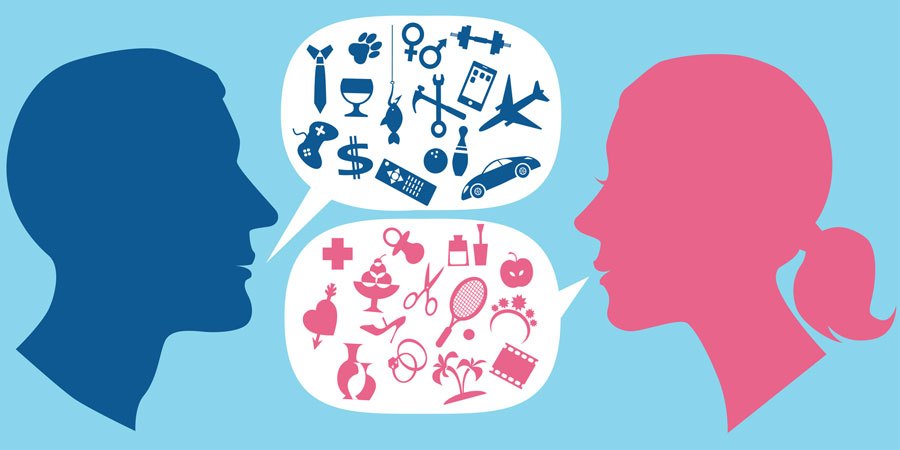Report on the Emergence of the Gender Gap in Mathematics and its Implications for Sustainable Development Goals
A new international study published in Nature provides comprehensive evidence that the gender gap in mathematics is not a result of innate biological differences but rather an outcome of early educational environments. These findings have significant implications for the achievement of several Sustainable Development Goals (SDGs), particularly SDG 4 (Quality Education), SDG 5 (Gender Equality), and SDG 10 (Reduced Inequalities).
Key Findings from the Study
The research, based on data from over 2.5 million French schoolchildren, systematically dismantles the theory of inherent gender-based aptitude in mathematics and points toward systemic issues within educational instruction.
Initial Parity and Subsequent Divergence
- Children of both genders enter first grade with virtually identical mathematical abilities.
- A measurable gap favoring boys appears within the first four months of formal schooling.
- This performance gap quadruples by the second grade and continues to widen through the sixth grade.
This rapid emergence of disparity in a school setting indicates a failure to provide the inclusive and equitable learning environments mandated by SDG 4 (Quality Education). It suggests that current pedagogical methods may inadvertently foster conditions that undermine SDG 5 (Gender Equality) from a foundational stage.
The Classroom Environment as the Primary Factor
- The study concludes that the gap is shaped by educational experiences rather than pre-existing cognitive differences.
- Supporting this conclusion, the 2019 student cohort, whose school year was shortened by the COVID-19 pandemic, showed a significantly smaller divergence in math scores. Less exposure to the classroom environment correlated with a smaller gender gap.
This evidence directly challenges educational systems to reform, ensuring they actively contribute to SDG 10 (Reduced Inequalities) by correcting, not creating, performance disparities among student populations.
Alignment with Sustainable Development Goals (SDGs)
The study’s conclusions are critically relevant to the global agenda for sustainable development, highlighting specific areas requiring urgent intervention.
SDG 4: Quality Education
The report underscores that true quality education must be equitable. The emergence of a gender gap in a core subject like mathematics demonstrates a systemic deficiency in educational quality. Achieving SDG 4 requires not only access to education but also ensuring that instructional practices promote equal outcomes for all students, regardless of gender.
SDG 5: Gender Equality
Addressing the math gender gap at its origin is fundamental to achieving gender equality. Early disadvantages in mathematics can steer girls away from science, technology, engineering, and mathematics (STEM) fields, perpetuating gender stratification in higher education and the workforce. Eliminating this educational barrier is a direct action toward the empowerment of girls and women as outlined in SDG 5.
Strategic Interventions and Global Partnerships
The findings are already catalyzing action and collaboration, demonstrating a commitment to evidence-based policy in line with the principles of the SDGs.
Curriculum Reform and Policy Implementation
The French Ministry of Education is utilizing the study’s data to refine its national curriculum and assessment strategies. This proactive approach aims to create targeted interventions that prevent the gender gap from becoming entrenched, aligning national policy with the objectives of SDG 4 and SDG 5.
Collaborative Efforts for Equitable Instruction (SDG 17)
The research has spurred new initiatives that exemplify SDG 17 (Partnerships for the Goals). Key stakeholders are collaborating to design and implement solutions:
- Cognitive psychologist Elizabeth Spelke is partnering with Nobel laureate Esther Duflo and the non-profit J-PAL.
- This partnership is focused on designing and testing new, equitable early-years math curricula in India.
Such cross-sector collaborations are essential for developing, testing, and scaling effective educational models that can be adapted globally to advance both quality education and gender equality.
Analysis of Sustainable Development Goals (SDGs) in the Article
1. Which SDGs are addressed or connected to the issues highlighted in the article?
-
SDG 4: Quality Education
The article is fundamentally about education. It discusses the quality of math instruction in early schooling, how the classroom environment affects learning outcomes, and efforts to refine curricula and national assessments. The core issue—a gender gap in math emerging in the first grade—is a direct challenge to providing quality and equitable education for all.
-
SDG 5: Gender Equality
The central theme of the article is the “gender gaps in mathematics.” It investigates why these disparities exist, concluding they are not biological but shaped by external factors. The entire study and the proposed solutions are aimed at achieving gender equality in a specific academic field, which is a key component of the broader goal of empowering all women and girls.
-
SDG 17: Partnerships for the Goals
The article highlights collaborative efforts to solve the identified problem. It mentions a partnership involving academic researchers (Elizabeth Spelke), a Nobel laureate (Esther Duflo), a non-profit organization (J-PAL), and a government body (the French Ministry of Education). This multi-stakeholder collaboration to design, test, and implement solutions is a direct example of SDG 17 in action.
2. What specific targets under those SDGs can be identified based on the article’s content?
-
SDG 4: Quality Education
- Target 4.1: “By 2030, ensure that all girls and boys complete free, equitable and quality primary and secondary education leading to relevant and effective learning outcomes.” The article’s focus on the math gap appearing in first grade and widening through sixth grade directly addresses the quality and equity of primary education and its learning outcomes.
- Target 4.5: “By 2030, eliminate gender disparities in education and ensure equal access to all levels of education…” This target is explicitly addressed, as the article’s entire purpose is to understand and ultimately eliminate the “gender disparities in math” that emerge during early schooling.
- Target 4.7: “By 2030, ensure that all learners acquire the knowledge and skills needed to promote sustainable development, including, among others, through education for… gender equality…” The effort to “create early math instruction that’s not only effective but also equitable” is a direct attempt to embed the principle of gender equality within the educational curriculum itself.
-
SDG 5: Gender Equality
- Target 5.1: “End all forms of discrimination against all women and girls everywhere.” The article suggests that the classroom experience “is subtly shaping performance along gender lines,” which can be interpreted as a form of systemic, albeit unintentional, discrimination that hinders girls’ educational outcomes in mathematics.
- Target 5.c: “Adopt and strengthen sound policies and enforceable legislation for the promotion of gender equality…” The article states that “in France, the Ministry of Education is using the findings to refine its national assessments and curriculum.” This is a clear example of a government body adopting policies based on evidence to promote gender equality in education.
-
SDG 17: Partnerships for the Goals
- Target 17.17: “Encourage and promote effective public, public-private and civil society partnerships…” The article describes such a partnership: “In partnership with Nobel laureate Esther Duflo and the nonprofit J-PAL, Spelke is helping design and test new math curricula for young learners in India.” This collaboration between academia, non-profits, and, in the case of France, government, exemplifies this target.
3. Are there any indicators mentioned or implied in the article that can be used to measure progress towards the identified targets?
-
For SDG 4 (Targets 4.1 and 4.5)
The primary indicator is the “gender gap in math scores.” The article provides specific data points that can be used for measurement:
- The difference in math abilities between boys and girls upon entering first grade (“virtually no gender difference”).
- The size of the gap after four months of instruction (“a small gap favoring boys appears”).
- The progression of the gap in subsequent years (“by the second grade, the gap had quadrupled. By sixth grade, it was even wider”).
Progress would be measured by a reduction or elimination of this gap in national assessments over time. This aligns with the official indicator 4.5.1 (Parity indices for education indicators).
-
For SDG 5 (Target 5.c)
An indicator is the “development and implementation of revised national curricula and assessments.” The article mentions that the French Ministry of Education is using the findings to “refine its national assessments and curriculum.” Progress can be measured by tracking the adoption of these new, equitable educational policies and tools. A further indicator is the creation of new curricula, as mentioned in the project in India to “design and test new math curricula for young learners.”
-
For SDG 17 (Target 17.17)
An indicator is the “existence and operation of multi-stakeholder partnerships.” The article explicitly identifies a partnership between researchers (Spelke), a Nobel laureate (Duflo), and a non-profit (J-PAL). The collaboration with the French Ministry of Education is another example. The number and effectiveness of such partnerships formed to address educational inequality can be used as a measure of progress.
4. Table of SDGs, Targets, and Indicators
| SDGs | Targets | Indicators |
|---|---|---|
| SDG 4: Quality Education |
|
|
| SDG 5: Gender Equality |
|
|
| SDG 17: Partnerships for the Goals |
|
|
Source: techexplorist.com







